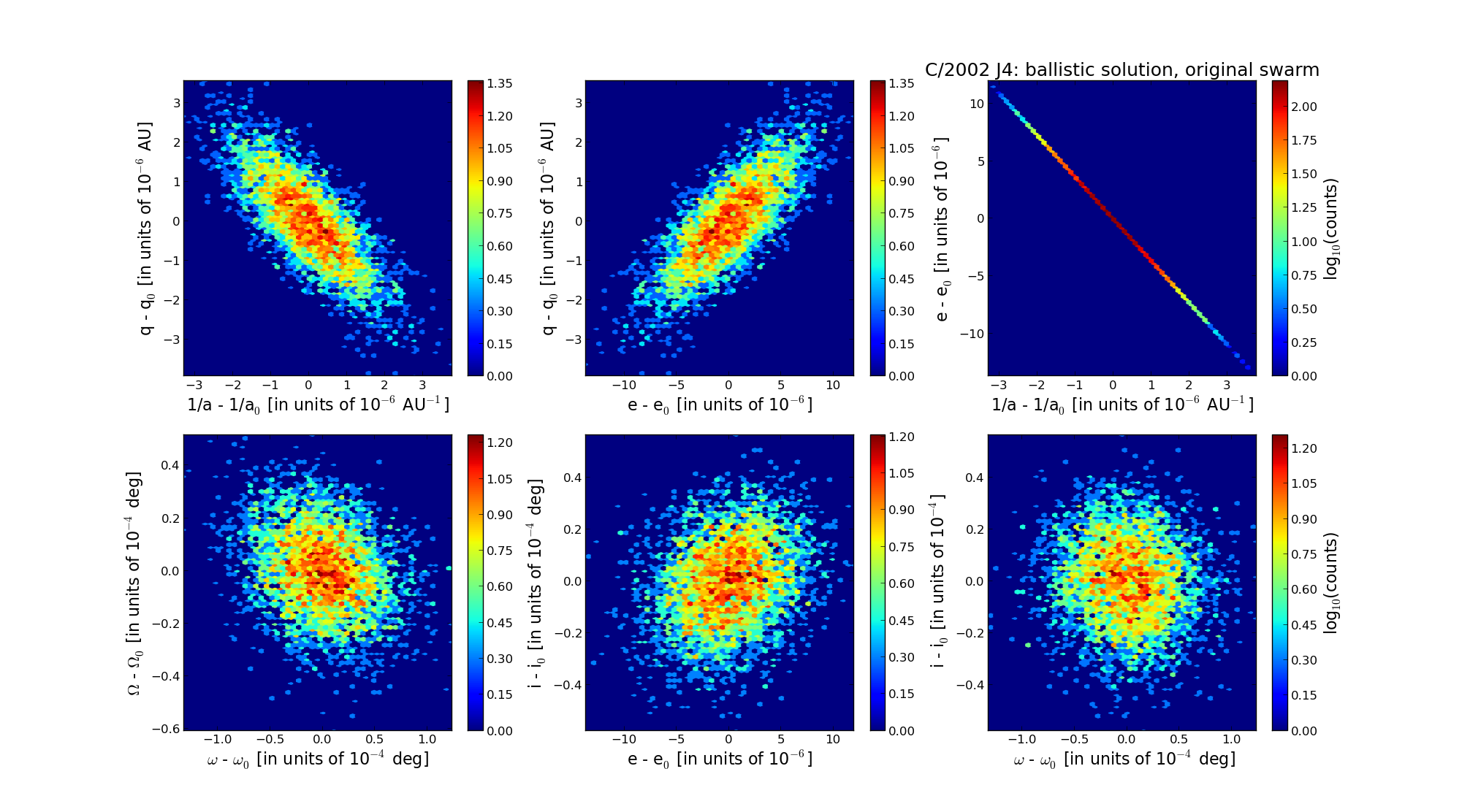| Solar System Dynamics & Planetology Group |
 |
C/2002 J4 NEAT |  |
| Solar System Dynamics & Planetology Group |
 |
C/2002 J4 NEAT |  |
| number of observations | 232 |
| number of residuals | 451 |
| data interval | 2002 May 4 — 2006 Oct. 1 |
| rms [arcsec] | 0.48 |
| orbit quality class | 1a+ |
| Epoch (TT) | 20031008.0 | = JD 2452920.5 |
| time of perihelion passage (TT) | 20031003.151072 | ± 0.000235 |
| perihelion distance | 3.63378023 | ± 0.00000105 |
| eccentricity | 1.00001831 | ± 0.00000356 |
| argument of perihelion [deg] | 230.705722 | ± 0.000035 |
| longitude of the ascending node [deg] | 70.881227 | ± 0.000014 |
| inclination [deg] | 46.521834 | ± 0.000015 |
| inverse semimajor axis [10-6 au-1] | -5.04 | ± 0.98 |

| Epoch (TT) | 17000817 | |
| time of perihelion passage (TT) | 20031003.506725 | ± 0.000244 |
| perihelion distance | 3.63841226 | ± 0.00000105 |
| eccentricity | 0.99987674 | ± 0.00000360 |
| argument of perihelion [deg] | 230.676162 | ± 0.000035 |
| longitude of the ascending node [deg] | 70.946574 | ± 0.000015 |
| inclination [deg] | 46.492041 | ± 0.000016 |
| inverse semimajor axis [10-6 au-1] | 33.88 | ± 0.99 |
| Epoch (TT) | 23030708 | |
| time of perihelion passage (TT) | 20031003.306849 | ± 0.000243 |
| perihelion distance | 3.63811716 | ± 0.00000106 |
| eccentricity | 1.00098246 | ± 0.00000360 |
| argument of perihelion [deg] | 230.766608 | ± 0.000036 |
| longitude of the ascending node [deg] | 70.872660 | ± 0.000015 |
| inclination [deg] | 46.480076 | ± 0.000016 |
| inverse semimajor axis [10-6 au-1] | -270.05 | ± 0.99 |